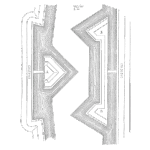
Questions to Ask During an Assessment
Abstract
Carl and Fred discussing the best ways to conduct an assessment.
ᐅ Play Episode
Your Reliability Engineering Professional Development Site
by Carl S. Carlson Leave a Comment

Carl and Fred discussing the best ways to conduct an assessment.
ᐅ Play Episode
by Tim Rodgers Leave a Comment

Tim and Fred discussing the issues involved with incoming inspection.
ᐅ Play Episode
by Tim Rodgers Leave a Comment

Tim and Fred discussing receiving defective parts and the reliance on suppliers for quality.
ᐅ Play Episode
Failure modes and effects analysis (FMEA) is a step-by-step approach for identifying all possible failures in a design, a manufacturing or assembly process.
“Failure modes” means the ways, or modes, in which something might fail.
Failures are any errors or defects, especially ones that affect the customer and can be potential or actual. They typically include the component, the damage or problem with it and the cause of it
“Effects analysis” refers to studying the consequences of those failures.
ᐅ Play Episode
by Adam Bahret Leave a Comment

Adam and Fred discussing a couple of interesting reliability problems and their solutions.
ᐅ Play Episode
by Adam Bahret Leave a Comment

Adam and Fred discussing the role of statistical tools in everyday reliability engineering.
ᐅ Play Episode
by Fred Schenkelberg Leave a Comment

Let’s discuss sources of variation and how to measure, monitor, and control processes to minimize the differences from one part to the next.
Statistical process control (SPC) is a set of tools that provide insights into the changing nature of processes.
by James Kovacevic Leave a Comment
Does the age of equipment increase the probability of failure?
That was the conventional wisdom until Nowlan & Heap discovered that components have six different types of failure patterns:
This means only 11% of failures are age related… 89% are not age related – so why do PM Programs still rely on time-based maintenance (Replacements, Overhauls) they only address 11% of failures.
ᐅ Play Episode
Mean Time Between Failure or MTBF is almost universally recognized in maintenance, reliability, and asset management.
Why is that? And does it actually help an organization improve the reliability of their assets?
The answer is a resounding No.
ᐅ Play Episode
by Adam Bahret Leave a Comment

Adam and Fred discussing a few of those tools that we do not use all that often.
ᐅ Play Episode
by James Kovacevic Leave a Comment
There are 3 primary types of maintenance strategies utilized:
The strategy utilized depends on heavily upon the nature of the failure.
Meaning does it wear out with age or is a random failure independent of time? Condition based maintenance is acceptable for the random failures, while Time based maintenance works for wearing out type failures.
Lastly, Run to Failure is acceptable when there are no significant consequences in the event of a failure.
ᐅ Play Episode
by James Kovacevic Leave a Comment
There are many different methodologies used to determine what maintenance should be done.
Once you include the variants, the number of methodologies can become overwhelming. By the end of the podcast, you should have an overview of each methodology and when to use them.
ᐅ Play Episode
by Fred Schenkelberg Leave a Comment
by James Kovacevic Leave a Comment
When you think of maintenance, what do you think of?
This episode will dissect the difference between Maintenance, Reliability, and Asset Management.
By understanding the difference between Maintenance, Reliability and its relation to Asset Management, you can change and guide the perception of Maintenance and the value it brings to the organization.
ᐅ Play Episode
by Tim Rodgers Leave a Comment
 Ask a question or send along a comment.
Please login to view and use the contact form.
Ask a question or send along a comment.
Please login to view and use the contact form.